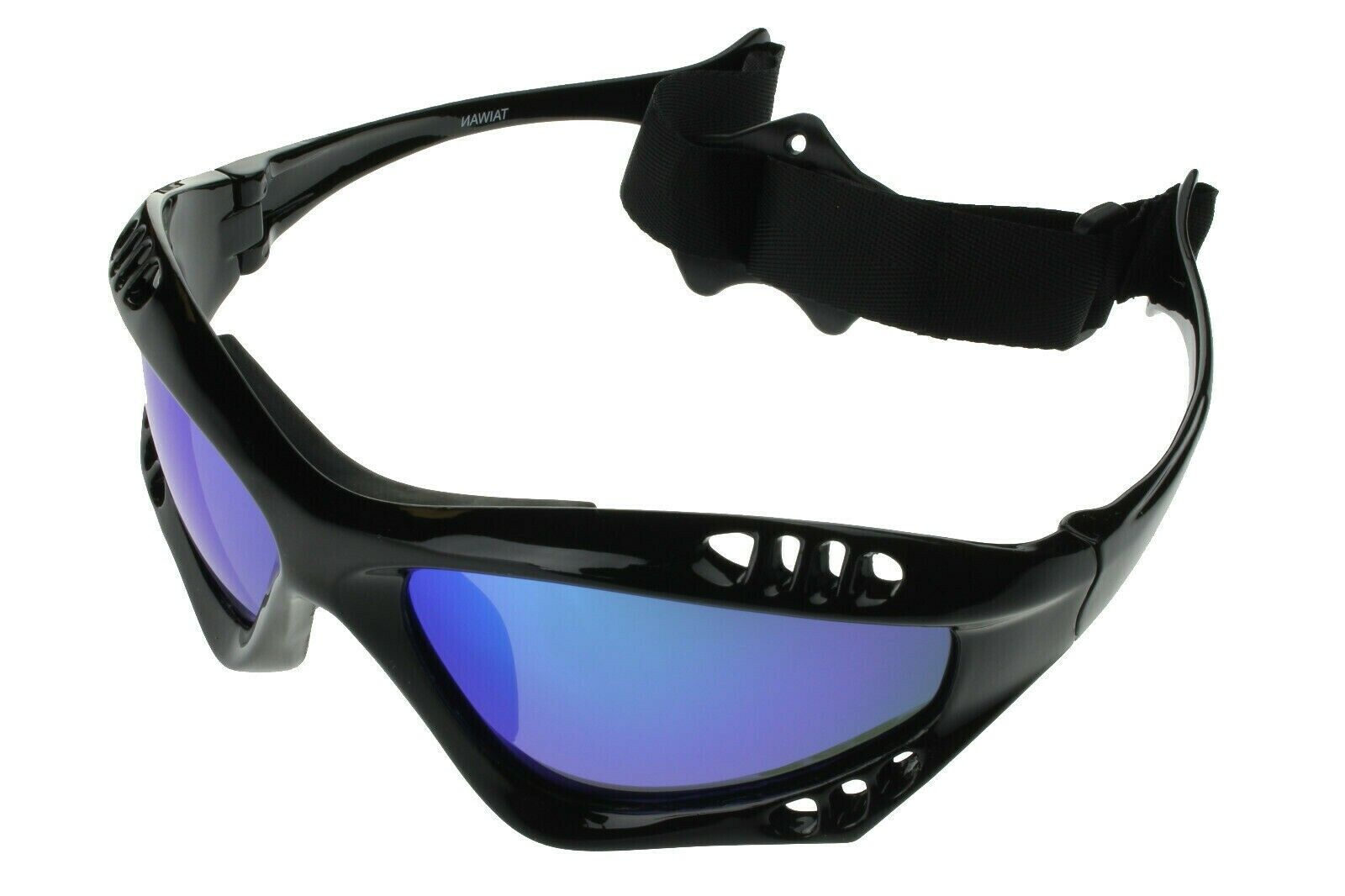- This topic has 0 replies, 1 voice, and was last updated 4 years, 3 months ago by .
-
Topic
-
The Weta is a great way to get your eyes washed out with a regular stream of salty water. While sun-specs do work to some extent, they aren’t effective if the water then dries on the inside of the lens – so you need to keep the water out but still allow it to circulate to prevent fogging up. Also if you wear glasses or contacts, you need a way to keep your eyes and the lenses clear of salt water.
While there are some sailing specific goggles now available, many are not designed with the quantity of water that you can get on the Weta – particularly downwind in choppy conditions in winds over 15 knots. Also some Ski Goggles are sold as watersports goggles but if they have vents with nothing to prevent the water getting in, you’re going to end up with the water in the glasses. If they have foam to block the vents it may take longer but they are likely to steam up if the foam soaks up water.
Look for goggles/glasses that have rubber that seals around the eyes on the inside because not only does water come at you from above but also from below. Although having a complete seal with no ventilation is a sure way to end up with fogged up lenses.
Prescription Lenses
There are some goggles suitable to wear over prescription glasses and you can get prescription RX lens inserts which clip into goggles and there are universal clip in lenses available. Also there are some goggles which can have prescription lenses but this is an expensive option as the lenses can be over $300.Australian company, Barz Optics, and Gill sell polarized glasses with prescription bifocal inserts which are good for reading but the glasses don’t have any form of seal to keep the water away from the lens.
Contact Lenses
You may find it cheaper and easier to use contact lenses which can be supplied bifocal (two strengths in each lens) or monofocal (where each eye has a different strength lens). Your prescription and personal preference will dictate which you find easier to use. One thing is to ensure salt water can’t get into the eye because it can be very painful and can also wash out the lens.
Also be sure to clean your lenses and eyes from any dirty water that may be have been held there by the lenses while you are sailing. Rainwater runoff can carry pathogens which can cause eye infections.Hydrophobic Liquid
RainX is a hydrophobic liquid available from car accessory stores for both plastics and glass which encourages water to run off the lens. The bottles it’s sold in are too large for a boat but decanted into a small bottle and applied with a lens cleaning cloth they can help prevent water drying on the lens. Beware of using the original RainX product on plastic lenses. A version for plastics is available.Water Bottle
As well as providing hydration for you, a water bottle can help to clear the lenses between races if you give a squirt to each lens.Goggles
Sold on eBay and elsewhere for around $30, these polarised and vented sunglasses are pretty good for a budget option. But the stiff plastic isn’t very rugged and the lenses can pop out. Sold in Australia by online seller, Wiggle, and others, these anti-fog, polarised lens goggles are aimed at the open water swimming and triathlon market. Designed with a one piece curved lens for an undistorted, clear 180-degree field of vision and finished with UV protection, anti-fog technology and a easy adjustment push button for the perfect fit. Suitable for Weta use and good value with extensive seals around the eyes. The problem is that the nose piece is a fixed length and while you can order a pair for a narrow face, you can’t make any adjustment.
However the seal does work well to keep the water out of your eyes – unfortunately, despite the anti-fog coating, they do tend to mist up quite easily which affects your vision.
Available with both tinted, plain and polarized lenses, Spex have a soft frame which is good for keeping the water out as it adapts to the shape of your face. However, they also have a “floating” lens which is attached with plastic studs to the frame with gaps at the top, bottom and sides. This is likely to let in water although other reviewers have said the lenses shed water easily and the gaps prevent misting up. (Not tested) Glasses
These floating polarised sunglasses look much like any other until you notice the small slot in the lens which provides ventilation and stops them from steaming up.
Originally sold as Race sunglasses, they have a hydrophobic coating on the lens and an oil-resistant interior coating, applied to the inside face, repels fingerprints, sun lotion and skin oils.
Tip: You can create your own vented sunglasses by cutting off the corner of the lens and then inserting them back in the frame although they may lack the resistant coatings.The bifocal lens insert means you can read maps, watches, instruments etc but there’s no rubber to keep water out around the eyes and they need to be constantly washed off with water to clear the lenses if it’s a wet sail. Quite expensive These inexpensive sunglasses are available with polarized lenses and include an easily adjustable strap. There are ventilation holes above and below the lens but they just serve to let in water which means they need constant cleaning during wet sailing. The frames are stiff plastic and the lenses are very light which means they can easily pop out of the frame.
Prescription lenses are available at seaspecs.com
- You must be logged in to reply to this topic.







